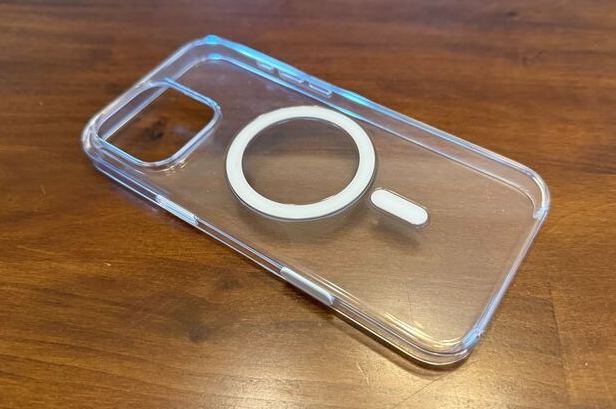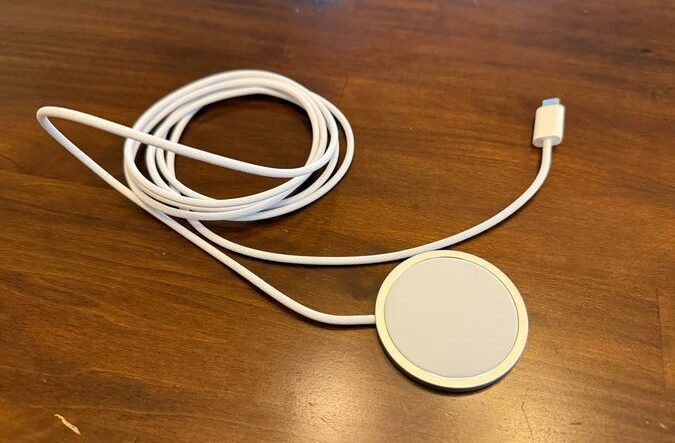But if you prefer to stick with Apple’s own cases, there are currently two options: the clear cases and the silicone cases.

The clear case is definitely the superior of Apple’s two first-party MagSafe cases.
Credit:
Samuel Axon
The clear cases actually have a circle where the edges of the MagSafe magnets are, which is pretty nice for getting the magnets to snap without any futzing—though it’s really not necessary, since, well, magnets attract. They have a firm plastic shell that is likely to do a good job of protecting your phone when you drop it.
The Silicone case is… fine. Frankly, it’s ludicrously priced for what it is. It offers no advantages over a plethora of third-party cases that cost exactly half as much.
Recommendation: The clear case has its advantages, but the silicone case is awfully expensive for what it is. Generally, third party is the way to go. There are lots of third-party cases from manufacturers who got licensed by Apple, and you can generally trust those will work with wireless charging just fine. That was the whole point of the MagSafe branding, after all.
The MagSafe charger
At $39 or $49 (depending on length, one meter or two), these charging cables are pretty pricey. But they’re also highly durable, relatively efficient, and super easy to use. In most cases, you might as well just use any old USB-C cable.
There are some situations where you might prefer this option, though—for example, if you prop your iPhone up against your bedside lamp like a nightstand clock, or if you (like me) listen to audiobooks on wired earbuds while you fall asleep via the USB-C port, but you want to make sure the phone is still charging.

The MagSafe charger for the iPhone.
Credit:
Samuel Axon
So the answer on Apple’s MagSafe charger is that it’s pretty specialized, but it’s arguably the best option for those who have some specific reason not to just use USB-C.


















+ There are no comments
Add yours